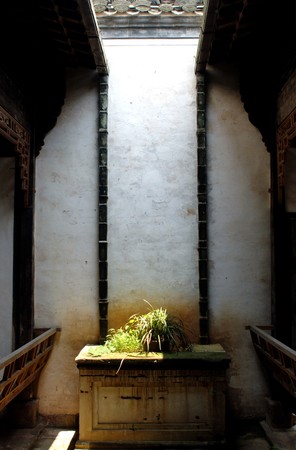Introduction to Bengal Mud Houses
Step into the world of Bengal mud houses, where every wall and courtyard tells a story of India’s rich cultural tapestry. These traditional homes, found mostly in the rural heartlands of West Bengal and Bangladesh, are far more than just shelter—they are living testaments to the ingenuity and warmth of Indian communities. Built with locally sourced materials like clay, straw, bamboo, and cow dung, these homes stand as symbols of sustainability and harmony with nature. Their cool interiors offer respite from the sweltering summers typical in this region, while their organic designs celebrate collective living and family bonds. Bengal mud houses are not only a practical response to the local climate but also a reflection of the values, artistry, and timeless traditions that define Indian heritage.
2. Materials and Construction Techniques Unique to Bengal
In the heart of Bengal, traditional mud houses have stood the test of time, thanks to their ingenious use of locally sourced materials and age-old construction techniques. These homes are not just architectural marvels; they are also a testament to the deep bond between people and their environment.
Locally Sourced, Eco-Friendly Materials
The primary material used in Bengal mud houses is alluvial soil, abundantly available along the banks of rivers like the Ganges and Brahmaputra. This fertile earth is mixed with natural binders such as cow dung and rice husk, both byproducts of rural life. Bamboo, another staple resource in Bengal, is frequently used for framing and roofing due to its strength and flexibility. Thatch from paddy straw or coconut leaves provides excellent insulation and is readily replaced after each monsoon.
| Material | Source | Function |
|---|---|---|
| Alluvial Soil (Mud) | Riverbanks & Fields | Wall Construction |
| Cow Dung | Local Farms | Natural Binder & Pest Repellent |
| Rice Husk/Straw | Paddy Fields | Strengthening Mud Mix & Insulation |
| Bamboo | Bamboo Groves | Framework & Roof Structure |
| Thatch (Paddy/Coconut Leaves) | Paddy Fields/Coastal Areas | Roofing Material & Insulation |
Traditional Building Techniques Tailored for Bengal’s Climate
The construction process begins with compacting the mud mixture into thick walls, which naturally regulate indoor temperature. Bamboo poles are expertly tied together using jute ropes, forming a sturdy skeleton for the house. The thatched roof is designed with a steep pitch to allow rainwater to run off swiftly during heavy monsoons—a crucial adaptation for the region’s climate.
Ingenuity in Design for Comfort and Sustainability
Bengal mud houses typically feature small windows and verandahs shaded by overhanging roofs. These design elements keep interiors cool during scorching summers and provide protection from torrential rains. The use of breathable natural materials ensures good air circulation, reducing the need for artificial cooling or heating. Moreover, since most materials are biodegradable and sourced locally, these homes leave a minimal environmental footprint.
A Living Heritage Rooted in Community Wisdom
The knowledge of building these sustainable homes has been passed down through generations. Families often come together during construction, turning it into a community event filled with shared stories and traditions. This not only strengthens social bonds but also keeps alive the wisdom that makes Bengal mud houses so well-suited to their unique setting.

3. Cultural Significance and Family Life
Bengal mud houses are not just architectural wonders; they are living, breathing symbols of Bengali culture and values. These traditional homes, known locally as “mati bari” or “kutcha ghar,” have been the heart of family life for generations. The open courtyards, shaded verandas, and cool interiors create a welcoming space where families gather to share meals, stories, and laughter. In Bengal, the home is more than just shelter—it’s a sacred space that nurtures relationships and preserves customs.
The Heart of Rituals and Festivals
From Durga Puja to Poila Boishakh (Bengali New Year), these mud houses become the stage for vibrant celebrations. The earthen walls are decorated with alpona (traditional patterns made with rice paste), while the courtyards buzz with children playing and elders exchanging blessings. During family events like weddings or annaprasan (the first rice-eating ceremony), the entire community comes together under one roof, strengthening bonds that last a lifetime.
Daily Life Rooted in Tradition
Life inside a Bengal mud house flows with the rhythm of nature and tradition. Every morning, women draw kolam designs at the entrance, believed to bring prosperity. Meals cooked on clay stoves fill the air with the aroma of fresh spices—often enjoyed together on the cool floors. Evenings are spent sharing stories under oil lamps, as generations learn from each other in this nurturing environment.
A Symbol of Togetherness
For many Bengalis, growing up in a mud house means belonging to a close-knit community. Neighbours drop by without notice, children play freely in shared spaces, and everyone looks out for one another. The thick mud walls not only keep homes cool but also foster warmth among people—offering comfort during monsoons and a sense of security year-round. In every corner of a Bengal mud house lies a story—a testament to sustainable living rooted deeply in Indian family values.
Natural Cooling and Sustainable Features
Bengal mud houses are a beautiful blend of age-old wisdom and practical design, making them an excellent example of sustainable living in India. These homes are especially appreciated for their ability to keep the interiors cool and comfortable throughout the year, even during the scorching summer months common in West Bengal and other eastern states.
The Science Behind Natural Cooling
The secret to these homes’ natural cooling lies in their thick mud walls. Mud is a natural insulator. During the day, it absorbs heat slowly and prevents it from entering the living space, while at night, it releases stored warmth, maintaining a balanced indoor temperature. This process is highly effective in Bengal’s hot and humid climate.
Ventilation and Air Circulation
Proper ventilation is another crucial feature. Traditional Bengal mud houses are designed with strategically placed windows, high ceilings, and sometimes even small vents near the roof (locally known as ‘jharoka’). These allow fresh air to circulate freely, pushing warm air out and pulling cooler breezes inside. The cross-ventilation system ensures that families remain comfortable without relying on electric fans or air conditioners.
Protection from Rain
With heavy monsoon rains being a hallmark of the region, Bengal mud houses are thoughtfully built with sloping thatched or tiled roofs. The extended eaves direct rainwater away from the walls and foundations, preventing erosion and keeping interiors dry. This combination of mud walls and clever roofing keeps the home resilient against both heat and rain.
Key Sustainable Features Table
| Sustainable Feature | Benefit |
|---|---|
| Mud Walls | Excellent thermal insulation; keeps home cool in summer and warm in winter |
| Natural Ventilation (Jharoka) | Continuous airflow reduces indoor heat & humidity naturally |
| Sloped Roofs with Extended Eaves | Protects against heavy rains; prevents wall erosion |
| Locally Sourced Materials | Minimises carbon footprint; supports village economy |
| No Need for AC or Heaters | Reduces electricity bills; eco-friendly living |
The result is a home that stands strong through all seasons—hot summers, wet monsoons, and mild winters—making Bengal mud houses a truly sustainable choice rooted in Indian tradition.
5. Modern Revival and Urban Adaptation
Across India, a heartening revival of Bengal mud houses is underway, bridging cherished traditions with the demands of contemporary life. Many urban architects and forward-thinking families are rediscovering the wisdom in age-old mud construction, blending eco-friendly materials with innovative design to create homes that are both sustainable and comfortable.
Reviving Heritage with New Ideas
Today’s architects, inspired by the timeless beauty and practicality of Bengal mud houses, are incorporating traditional techniques such as sun-dried bricks, lime plasters, and natural cooling systems into modern projects. They carefully study the past—like the use of thick walls for insulation or courtyards for airflow—and adapt these features to suit urban plots and lifestyles. This blend not only preserves our architectural heritage but also makes housing more climate-resilient and cost-effective.
Meeting Modern Needs
Families who choose mud homes today enjoy the best of both worlds: cool interiors during scorching Indian summers, reduced electricity bills due to minimal reliance on air conditioning, and a healthy living environment free from toxic chemicals. Innovations like rainwater harvesting, solar panels, and modular layouts seamlessly integrate with traditional mud structures, proving that sustainability can go hand-in-hand with convenience and style.
A Cultural Renaissance
The movement goes beyond bricks and mortar—it is about reconnecting with our roots while embracing progress. From Kolkata to Bengaluru, communities are coming together to celebrate local craftsmanship and natural building methods. Workshops, heritage walks, and social media campaigns are inspiring a new generation to take pride in our indigenous knowledge. In this way, every new mud house becomes a living tribute to India’s rich legacy and a step towards a greener future.
6. Guidelines and Practical Tips for Building Your Own
Step-by-Step Guide for Constructing a Bengal Mud House
Building your own sustainable Bengal mud house is not just about reviving tradition—its about embracing a climate-responsive lifestyle that fits beautifully into India’s contemporary context. Here’s how you can begin this meaningful journey, step by step:
1. Site Selection and Preparation
Choose a location with good natural drainage to avoid waterlogging during monsoon. Orient the house to maximize natural ventilation and daylight. Clear the area of debris and prepare a solid foundation using locally available stones or bricks for extra stability.
2. Sourcing Sustainable Materials
Use local, naturally available mud, straw, cow dung, and rice husk. These materials are affordable, eco-friendly, and provide excellent thermal insulation—keeping your home cool in summer and warm in winter. Connect with local artisans who have experience in traditional mud construction (known as Mistri or Kumhar).
3. Wall Construction Techniques
The most common method is Cob or Adobe. Mix mud with straw and cow dung to form bricks or apply directly in layers. Allow each layer to dry before adding the next. Aim for thick walls (at least 12-18 inches) for better insulation and strength.
4. Roofing Solutions
Traditional sloped roofs using bamboo or timber frames covered with clay tiles or thatch are ideal for heat regulation and rainwater runoff. Consider modern alternatives like ferrocement if durability is a concern, but always prioritise breathable, locally sourced materials.
5. Finishing Touches: Plastering and Decoration
Apply a final coat of mud plaster mixed with cow dung for waterproofing and pest resistance. Decorate with traditional patterns (Alpona) using natural pigments for a personal touch that celebrates Bengali heritage.
6. Integrating Modern Amenities Sustainably
You can easily add rainwater harvesting systems, solar panels, and composting toilets without compromising on tradition. Plan spaces thoughtfully to include modern kitchens and bathrooms while maintaining the essence of mud architecture.
Pro Tips from Indian Homebuilders
- Pace yourself: Mud construction takes patience; allow adequate drying time between stages.
- Community matters: Engage local craftsmen—they bring invaluable skill and cultural wisdom.
- Maintenance: Annual plaster touch-ups keep your home strong and beautiful for generations.
- Cultural respect: Honour Vastu Shastra principles if desired, blending tradition with personal preference.
A Bengal mud house isn’t just an architectural choice—it’s a commitment to sustainability, community values, and the soulful rhythms of rural India. With careful planning and heartfelt intention, your dream of an eco-friendly home is closer than you think!


